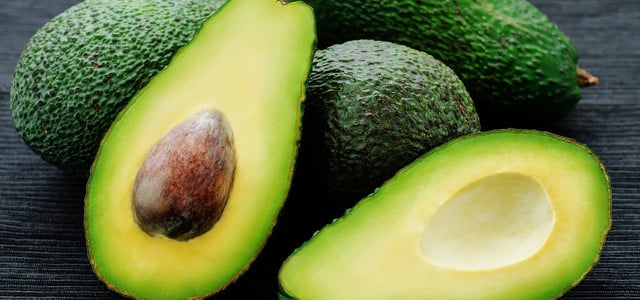The health benefits of avocados must be endless – it’s a superfood, right? Guacamole spreads, healthy smoothies, and a protein fix in your salad are just the beginning. But exactly how good are avocados for you? And are they damaging the environment?
Here are the answers to the most important questions about all things avocado. We look at their many health benefits, and then discuss the problematic environmental impact of this eternally trending superfood. But it’s not all bad – we finish up by giving you some tips on how to buy and store avocados as sustainably as possible.
The Health Benefits of this High-Fat Superfood: Are Avocados Good for You?
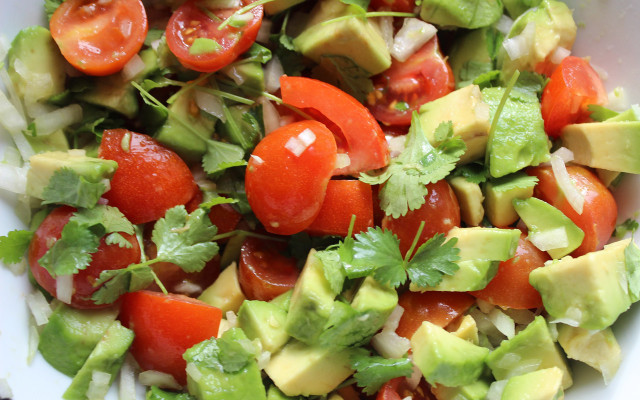
Avocado flesh contains up to 15% fat. This may leave you wondering whether the supposedly healthy superfood isn’t just a calorie bomb in disguise: A mere 3.5 oz. of avocado can pack up to 220 calories. How on earth are an avocado’s health benefits supposed to outweigh the calorie count of this fatty fruit?
Believe it or not, a majority of the fats contained in avocados are healthy unsaturated fatty acids. These boost your metabolism and can even help you lose weight. This benefit is one common reason for avocados’ role as a trendy diet staple in dishes such as guacamole.
In addition to these valuable unsaturated fats, avocados’ healthy nutrient base of vitamins B, A, and E – as well as minerals such as potassium and magnesium – contributes to its image as a superfood. But the avocado’s benefits don’t stop there. The fruits are also rich in amino acids which assist the body in building muscle and reducing stress. This makes them a great choice for vegans and vegetarians looking for plant-based protein sources.
Another of avocados’ benefits makes them an especially healthy pick despite their high fat content: carbohydrates – or rather, the lack thereof. Avocados are a great food to incorporate into your low-carb diet and help to prevent food cravings.
Now we’ve looked at the health benefits of avocados, it’s important we discuss the potential downsides to this superfood. There are numerous reasons why ‘an avocado a day’ isn’t such a good idea!
Disadvantages and Downsides of Avocados
The more popular and commercially viable a superfood becomes, the greater its environmental impact will be. (Check out our guide on another superfood craze here: Healthy Inca Grain? 9 Things You Need to Know About Quinoa). As always, we all have to balance our personal priorities – nutrition, variety, convenience, etc. – with sustainable practices in agriculture and retail. So is the avocado another victim of its own success? Its growing popularity has certainly been accompanied by increased criticism – find out more below.
Although around 80 percent of avocados consumed here were grown in the United States until the 1990s, demand has since drastically risen, along with total net imports. The avocados sold in the US today are primarily sourced from Mexico, the world’s leading producer. In 2017, the US imported approximately $2.6 billion worth of fresh avocados from Mexico. Avocados found on American store shelves also come from countries such as Chile, Peru, and the Dominican Republic. The United States benefits from imports when the fruits are out of season in avocado-growing states like California. However, avocados can have quite the lengthy journey to the United States.
Transportation Routes and Water



Different avocado varieties ripen at different points throughout the year and are grown all year-round. Avocados are thus always in stock, yet each seasonal variety has a major environmental impact. Here, long transportation routes in refrigerated containers are to blame for hefty CO2 emissions. Also, environmental organizations in Mexico have criticized the practices of illegal deforestation which clear land for plantations.
Another environmental problem is irrigation. Growing one single avocado requires a whopping 60 gallons of water – and this in hot, dry places where water shortages aren’t uncommon. Estimates put the amount of water required to produce two pounds of avocados at 265 gallons – and that’s usually only around four fruits.
In many cases, the water which irrigates avocado farms comes from homemade wells and is plagued with pollutants due to poor filtering. Even the fruits free of pesticides can be contaminated with harmful substances. These potential adverse health effects really put the superfood avocado’s benefits into a different light.
No Organic Seal, No Deal
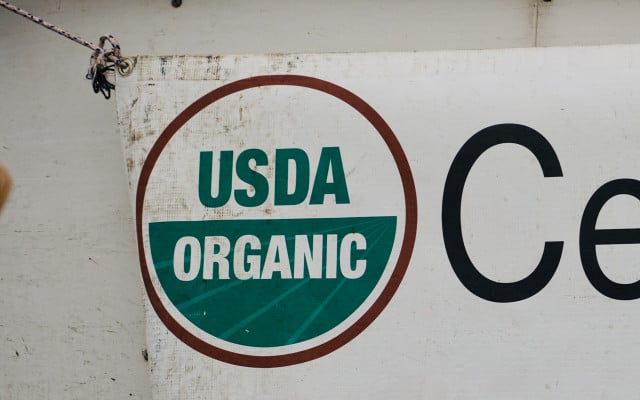


Additional factors that bring avocados’ sustainability into question are the environmental conditions under which they are grown. In short: Sustainable, organic cultivation isn’t a top priority in many of the world’s largest avocado-growing regions. The mineral fertilizers needed for growing avocados leave behind significant quantities of salt in the ground and pollute the groundwater even further, rendering it undrinkable. The healthy superfood we know and love here turns out to be a very unhealthy crop in many other places. So, do the benefits outweigh the odds when it comes to conventionally-farmed avocados? We don’t think so.
Therefore, when shopping for avocados, it’s important to look for the USDA organic seal and the closest land of origin. Sustainable consumption can help reduce avocados’ environmental footprint, and getting informed is the first step to a more mindful approach to consumption. We have plenty of information and tips for buying and storing avocados right here!
Avocado: What Kinds are There?
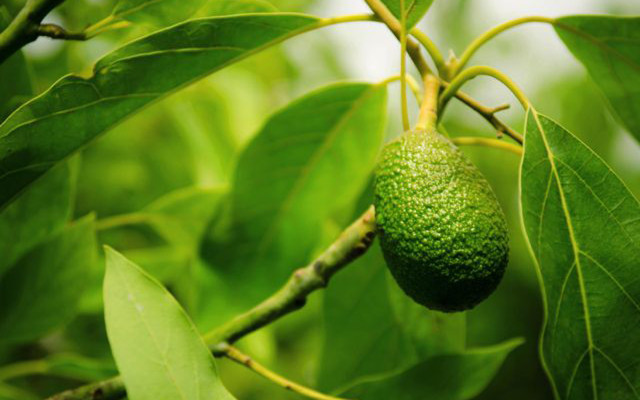


First things first: Where do avocados come from? Originally native to south-central Mexico, avocados made their first journey to the United States near the beginning of the 19th century, albeit under a different alias. Historically referred to in Florida as the ‘alligator pear’, this tropical fruit has only recently undergone its transformation into the superfood sensation we know today.
At a towering height of over 65 feet, avocado trees now thrive in plantations well beyond their native borders. Cultivation has since expanded to encompass all tropical and subtropical regions on the face of the Earth. Although there are endless hybrids, there are three primary types of avocados, with classifications which refer to their origin:
- Mexican (M)
- Guatemalan (G)
- West Indian (W)
There are some 400 avocado varieties out there – often hybrids of two different types. Most common around the world are the Fuerte (cross between G and M) and Hass (G) avocados. Other less common varieties include the Bacon, Edranol, Ettinger, Pinkerton, Reed, and Ryan avocados.
The Fuerte has an elongated shape (similar to a pear) with a smooth, dark olive-green skin which is easy to peel. Their fruits are in distinct optical contrast to Hass avocados which are more spherical in form, have a rougher, pebbled skin and change color from a bold green to dark purple by the end of their ripening process.
These varieties also differ in taste. Hass avocados are available all year round and have a rather rich, nutty flavor to them – also somewhat buttery due to the oil content. Unlike the yellow insides of the Hass, Fuerte avocados have a mild and creamy green flesh which is rich in taste.
Buying Avocados: What to Look out for
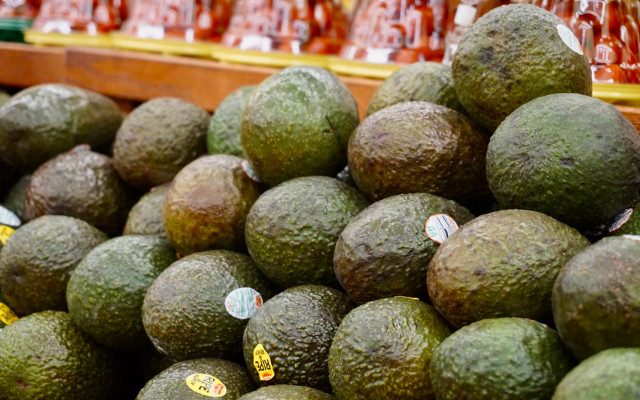


When buying avocados, it’s important to keep the ripening process in mind. The fruits fall or are picked from the tree still hard and unripe. The ripening process only begins once the fruits are stored at room temperature. Any colder and the ripening process may be interrupted.
- As such, avocados for sale at the supermarket usually make their way directly from refrigerated storage to store shelves. Some retailers let them ripen before putting them out and only sell fully ripe fruits.
- Is it ripe or not? Hass avocados are easy. You’ll know if they are ripe simply by the color of the shell. Green means the fruit still needs some time, olive-brown to black shells means it’s ripe. If the shell appears wrinkled, this may mean the fruit is already overripe and shouldn’t be consumed.
- For green Fuerte avocados, a simple feel for toughness should do the trick in testing whether the fruit is ripe or not. If the avocado still feels hard, it’s not yet ripe. A softer, almost elastic feel is your indicator that it’s ripe. If even softer or mushy, don’t bother buying it.
The decision whether to buy ripe or unripe avocados depends on the time frame within which you plan to use it. Those in not much of hurry should purchase unripe fruits to let them ripen at home, as ripe avocados should usually be consumed within a day. Also remember to check the fruit for signs of mold, bruises or the like resulting from transport or storage. These avocados are no benefit to you or your health.
Read on: How to Grow Your Own Avocado Tree
Storing Ripe Avocados Correctly: Proper Storage Benefits



Storing food correctly is important. How you store an avocado correctly depends on two factors: ripeness and when you want to eat it. Unripe avocados that you want to eat soon should be stored at room temperature – optimally together with an apple or two. This trick accelerates the ripening process. We’ve outlined the science behind this helpful kitchen hack in our guide on all things apples and their optimal storage conditions: Storing Apples: Proper Apple Storage Techniques.
If the avocado is already ripe and you’re not planning on consuming it immediately, storing it in the fridge will delay the ripening process for up to a couple days (although take it out of the fridge at least an hour before serving). Even unripe avocados won’t last longer than a few days in the fridge. No matter avocados health benefits, stocking up on this superfood doesn’t make a lot of sense. As always, it’s best to just buy what you need – this will help avoid waste and overconsumption, keeping you and the planet healthy!



Read more:
- Take a Break: 6 Healthy Lunch Ideas
- Recipe: Make Your Own Granola Bars, Quickly and Sustainably
- Vegan Apple Pie Recipe: A Seasonal Favorite
This article was translated from German to English by Evan Binford. You can view the original here: Avocado: wichtige Fakten zum problematischen Superfood.
** Links to retailers marked with ** or underlined orange are partially partner links: If you buy here, you actively support Utopia.org, because we will receive a small part of the sales proceeds. More info.Do you like this post?






